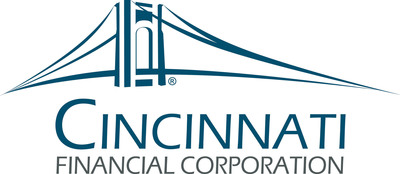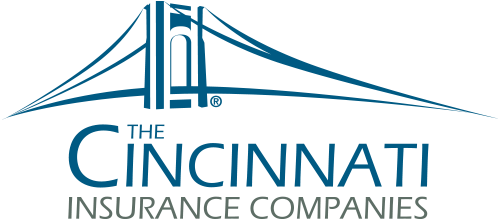The Executive Capstone program offers coverage features, limits and options to help agents tailor insurance programs for the more complex insurance needs of clients with homes valued up to
Will
"We believe that consumers benefit from building a relationship with a local independent insurance agent who understands their specific needs. For 65 years, we've carefully selected the best independent agents and partnered with them to deliver Everything Insurance Should Be® to the people and businesses in their communities. Now, we can offer our broad products, superior claims service and industry-leading financial strength to discriminating insurance buyers across the state of
The company's second-quarter results, announced in July, demonstrated the success of its increased focus on high net worth personal insurance clients. Agents across the country responded favorably to a broadened underwriting appetite announced earlier this year. Personal lines net written premiums rose 5 percent in the first half of 2015 as the growth in personal lines new business written premiums accelerated to 20 percent. The company plans to continue expansion of the Executive Capstone program to
About
|
Mailing Address: |
Street Address: |
|
P.O. Box 145496 |
6200 South Gilmore Road |
|
Cincinnati, Ohio 45250-5496 |
Fairfield, Ohio 45014-5141 |
Safe Harbor Statement
This is our "Safe Harbor" statement under the Private Securities Litigation Reform Act of 1995. Our business is subject to certain risks and uncertainties that may cause actual results to differ materially from those suggested by the forward-looking statements in this report. Some of those risks and uncertainties are discussed in our 2014 Annual Report on Form 10-K, Item 1A, Risk Factors, Page 33.
Factors that could cause or contribute to such differences include, but are not limited to:
- Unusually high levels of catastrophe losses due to risk concentrations, changes in weather patterns, environmental events, terrorism incidents or other causes
- Increased frequency and/or severity of claims or development of claims that are unforeseen at the time of policy issuance
- Inadequate estimates or assumptions used for critical accounting estimates
- Declines in overall stock market values negatively affecting the company's equity portfolio and book value
- Domestic and global events resulting in capital market or credit market uncertainty, followed by prolonged periods of economic instability or recession, that lead to:
- Significant or prolonged decline in the value of a particular security or group of securities and impairment of the asset(s)
- Significant decline in investment income due to reduced or eliminated dividend payouts from a particular security or group of securities
- Significant rise in losses from surety and director and officer policies written for financial institutions or other insured entities
- Prolonged low interest rate environment or other factors that limit the company's ability to generate growth in investment income or interest rate fluctuations that result in declining values of fixed-maturity investments, including declines in accounts in which we hold bank-owned life insurance contract assets
- Recession or other economic conditions resulting in lower demand for insurance products or increased payment delinquencies
- Difficulties with technology or data security breaches, including cyberattacks, that could negatively affect our ability to conduct business and our relationships with agents, policyholders and others
- Disruption of the insurance market caused by technology innovations such as driverless cars that could decrease consumer demand for insurance products
- Delays or performance inadequacies from ongoing development and implementation of underwriting and pricing methods, including telematics and other usage-based insurance methods, or technology projects and enhancements expected to increase our pricing accuracy, underwriting profit and competitiveness
- Increased competition that could result in a significant reduction in the company's premium volume
- Changing consumer insurance-buying habits and consolidation of independent insurance agencies that could alter our competitive advantages
- Inability to obtain adequate reinsurance on acceptable terms, amount of reinsurance purchased, financial strength of reinsurers and the potential for nonpayment or delay in payment by reinsurers
- Inability to defer policy acquisition costs for any business segment if pricing and loss trends would lead management to conclude that segment could not achieve sustainable profitability
- Inability of our subsidiaries to pay dividends consistent with current or past levels
- Events or conditions that could weaken or harm the company's relationships with its independent agencies and hamper opportunities to add new agencies, resulting in limitations on the company's opportunities for growth, such as:
- Downgrades of the company's financial strength ratings
- Concerns that doing business with the company is too difficult
- Perceptions that the company's level of service, particularly claims service, is no longer a distinguishing characteristic in the marketplace
- Inability or unwillingness to nimbly develop and introduce coverage product updates and innovations that our competitors offer and consumers expect to find in the marketplace
- Actions of insurance departments, state attorneys general or other regulatory agencies, including a change to a federal system of regulation from a state-based system, that:
- Impose new obligations on us that increase our expenses or change the assumptions underlying our critical accounting estimates
- Place the insurance industry under greater regulatory scrutiny or result in new statutes, rules and regulations
- Restrict our ability to exit or reduce writings of unprofitable coverages or lines of business
- Add assessments for guaranty funds, other insurance‑related assessments or mandatory reinsurance arrangements; or that impair our ability to recover such assessments through future surcharges or other rate changes
- Increase our provision for federal income taxes due to changes in tax law
- Increase our other expenses
- Limit our ability to set fair, adequate and reasonable rates
- Place us at a disadvantage in the marketplace
- Restrict our ability to execute our business model, including the way we compensate agents
- Adverse outcomes from litigation or administrative proceedings
- Events or actions, including unauthorized intentional circumvention of controls, that reduce the company's future ability to maintain effective internal control over financial reporting under the Sarbanes-Oxley Act of 2002
- Unforeseen departure of certain executive officers or other key employees due to retirement, health or other causes that could interrupt progress toward important strategic goals or diminish the effectiveness of certain longstanding relationships with insurance agents and others
- Events, such as an epidemic, natural catastrophe or terrorism, that could hamper our ability to assemble our workforce at our headquarters location
Further, the company's insurance businesses are subject to the effects of changing social, global, economic and regulatory environments. Public and regulatory initiatives have included efforts to adversely influence and restrict premium rates, restrict the ability to cancel policies, impose underwriting standards and expand overall regulation. The company also is subject to public and regulatory initiatives that can affect the market value for its common stock, such as measures affecting corporate financial reporting and governance. The ultimate changes and eventual effects, if any, of these initiatives are uncertain.

Logo - http://photos.prnewswire.com/prnh/20110824/CL57087LOGO
To view the original version on PR Newswire, visit:http://www.prnewswire.com/news-releases/the-cincinnati-insurance-company-launches-executive-capstone-for-high-net-worth-markets-300139807.html
SOURCE
Investor, Dennis E. McDaniel, 513-870-2768, CINF-IR@cinfin.com, or Media, Betsy E. Ertel, 513-603-5323, Media_Inquiries@cinfin.com

